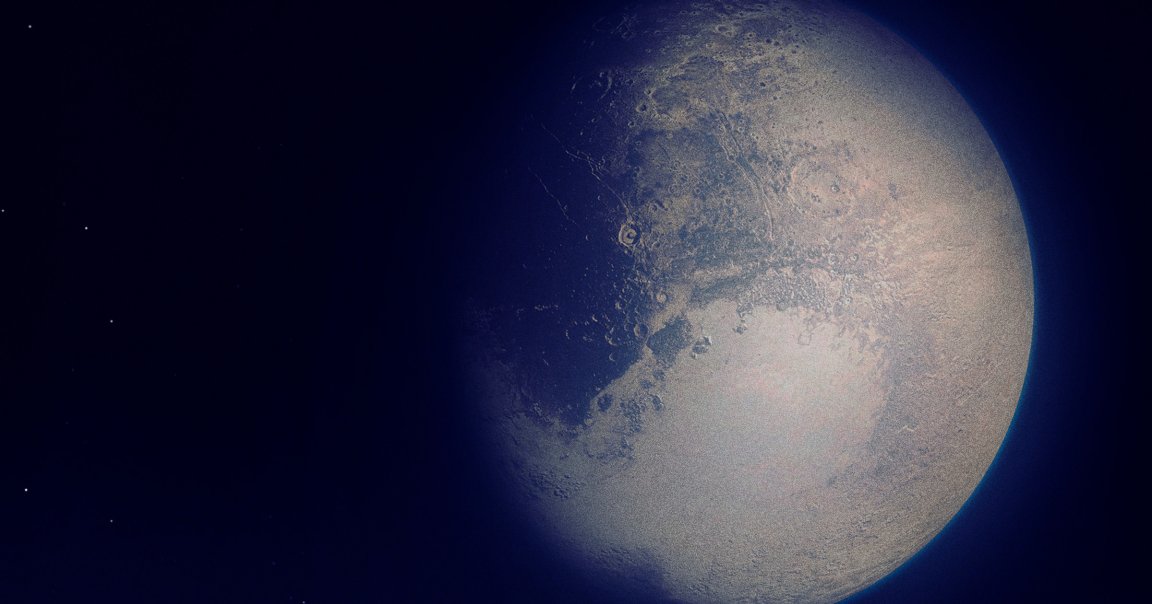
Astronomers using the James Webb Space Telescope have peered into a mysterious blue haze cloaking the surface of Pluto — and discovered that it’s controlling the dwarf planet’s climate and atmosphere.
The findings, reported in a new study published in the journal Nature Astronomy, also hint that other worlds, including our own, may have a hazy history as well, potentially reshaping our understanding of how the Earth came to possess its current climate.
“This is unique in the solar system,” lead author Tanguy Bertrand, an astronomer at the Paris Observatory in France, told Live Science. “It’s a new kind of climate, let’s say.”
When NASA’s New Horizons mission flew by Pluto in 2015, the space probe revealed that the dwarf planet was far from a “dead” world, instead possessing a complex geography defined by mountains, glaciers, ice sheets, and frozen dunes. Regions even differed in the type of ice they comprised: some were dominated by methane, others nitrogen, and all of it undergirded by a “bedrock” of water ice. In the most blatant violation of Pluto’s former reputation as an inert hunk, the aptly-named “volatile” ices on its surface regularly redistributed themselves according to seasonal patterns.
One of the most peculiar finds, however, was that Pluto appeared to be leaking copious amounts of its already thin atmosphere into space, Space.com noted. Stranger still, some of these discarded gas molecules were being sucked up directly by its outsized moon, Charon, something that’s yet to be witnessed elsewhere in the solar system.
To explain this bizarre behavior, a 2017 paper led by Xi Zhang, a planetary scientist at the University of California, Santa Cruz who also coauthored this latest study, predicted that Pluto’s atmosphere was covered with a cooling haze made of nitrogen and methane. As Live Science explains, the haze intervened by absorbing what little solar radiation reached it during the day — on average, Pluto orbits at a distance 39 times farther away than the Earth is from the Sun — and releasing it back into space at night in the form of infrared energy.
At least, that was the theory. Because of how closely Charon, the huge moon, orbited Pluto, the pair’s temperature readings were jumbled together. Resolving one from the other was impossible.
“Basically, we couldn’t know what part of the signal is due to Charon and what part is due to Pluto’s haze,” Bertrand told Live Science.
Enter the James Webb Space Telescope. According to the 2017 study, if the haze behaved as predicted, Pluto should emit strong radiation in the mid-infrared spectrum. Webb, with its state-of-the-art Mid-Infrared Instrument (MIRI), was able to distinguish between Pluto’s signals and those of its moon, confirming that the dwarf planet’s haze was producing the predicted light emissions.
“In planetary science, it’s not common to have a hypothesis confirmed so quickly, within just a few years,” Zhang said in a statement about the work. “So we feel pretty lucky and very excited.”
According to Zhang, other worlds in the Solar System, including Neptune’s moon Triton and Saturn’s moon Titan, possess haze-rich atmospheres similar to Pluto’s — “so we need to rethink their roles, too,” he said.
Even Earth may be due for some serious climate introspection.
“Before oxygen built up in Earth’s atmosphere, about 2.4 billion years ago, life already existed,” Zhang explained. “But back then, Earth’s atmosphere was totally different — no oxygen, mostly nitrogen, and a lot of hydrocarbon chemistry.”
“So by studying Pluto’s haze and chemistry,” he added, “we might get new insights into the conditions that made early Earth habitable.”
More on James Webb discoveries: NASA’s James Webb Telescope Just Found Frozen Water Around Another Star